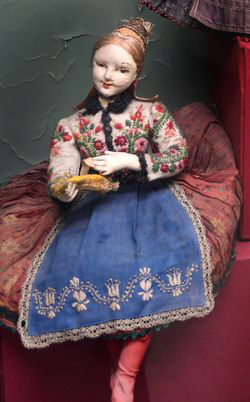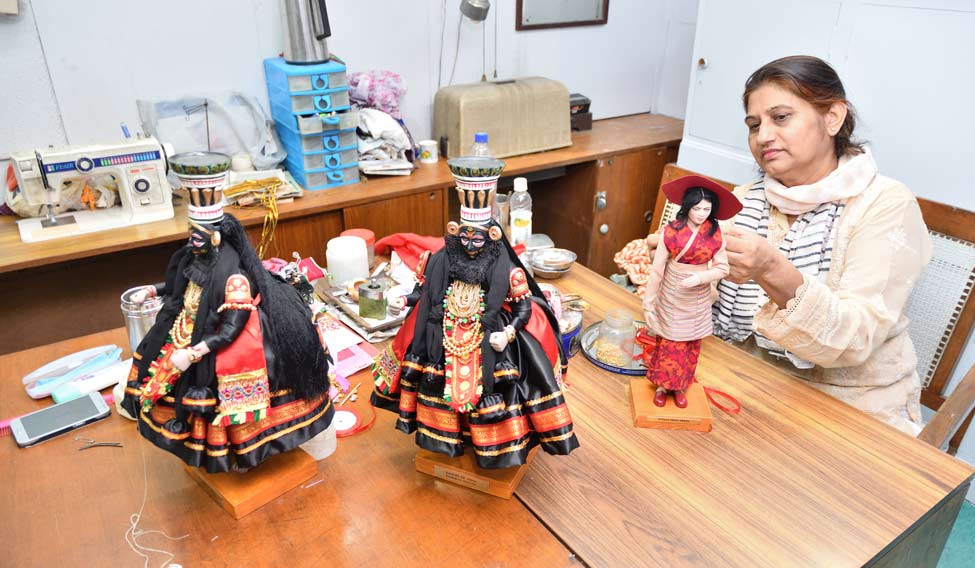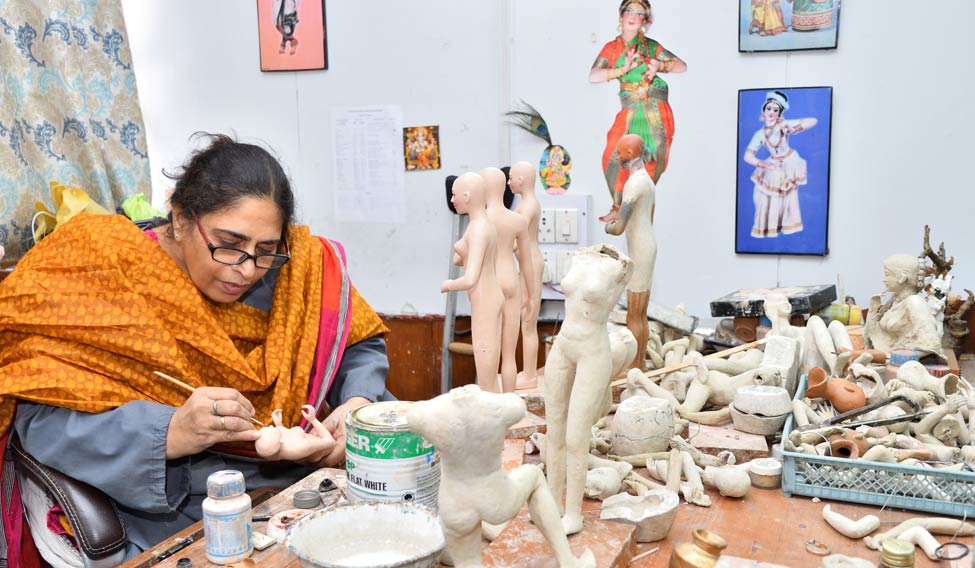Whether you live in Delhi or are visiting the city, Shankar's International Dolls Museum is a must-visit. Getting there is not a task if you hop on to the Delhi Metro. Gate No 4 of the ITO station opens at the entrance to the museum.
A bust of renowned political cartoonist K. Shankar Pillai greets the visitor at the entrance. The museum, founded by Shankar, has one of the largest collections dolls in the world—over 6,500 from across 85 countries.
 The first doll received by Shankar from the Hungarian ambassador
The first doll received by Shankar from the Hungarian ambassador
It all started with a single doll which the Hungarian Ambassador gifted Pillai in the early 1950s. This was what inspired him to set up this museum, says Shanta Srinivasan, Shankar's elder daughter who is also museum advisor. Shankar started collecting dolls from everywhere he travelled and soon had a collection of over 500 of them. Initially, he exhibited them at the various places in India along with paintings.
The frequent packing and unpacking resulted in the damage of dolls. At one such exhibition in Delhi, while Jawaharlal Nehru and Indira Gandhi were observing the dolls collection, Shankar voiced his concern over the damage to the dolls. Indira Gandhi at once mooted the idea of a permanent museum. A 1,000 dolls got a permanent home at the museum located in the busy and prestigious Bahadur Shah Zafar Marg. The museum was inaugurated by then President of India Dr S Radhakrishnan on November 30, 1965.
Fascinated children form a major share of the visitors. Shiv, 37, along with his wife and three-year-old daughter Shubhi are busy looking the dolls. "Shubhi was falling sleep but once inside the museum, she is full of energy," says Shiv. "The dolls give us an idea about the kind of dresses worn by people in the particular country," says Shiv.
 Parvinder dressing up dolls at the museum
Parvinder dressing up dolls at the museum
The dolls and the cloths worn by them are almost 40 years old, but they make a great statement about the culture of the country. For instance, dolls from France are smartly dressed with flared bell-bottom pants and go go glasses. On the other hand, the dolls from Japan are dressed in elaborate traditional kimonos and Samurai uniforms with the typical Japanese hairdo. In the Hungarian section, proudly placed on the top is the museum's first doll presented by ambassador. The doll is modelled as a young peasant woman wearing the traditional dress, sitting and gazing fondly at the corn cob she holds in her hand. The Switzerland section has a doll which is 250 years old, lying on bed with her attendant standing by her bedside.
The doll designing centre and workshop attached to the Shankar’s International Dolls Museum, is the heart and soul of the museum. Each of these handmade dolls is an exclusive example of craftsmanship as no two dolls are alike, explains, Roma Thakur, an artist who has been working in the workshop for 35 years. She says that making a doll can take from a week to 20 days, as the dolls have to go through the moulds, legs and hands are fixed and a finally finishing with mud and paper. Then comes the colour coating and the finish that lends character to the dolls.
After the dolls are ready, the dress department takes over. Miniature dresses are stitched for each doll and they are adorned with ornaments. The process of dressing itself takes at least 20 days, says Parvinder, the dress artist in the workshop.
 Roma busy modelling dolls at the museum
Roma busy modelling dolls at the museum
Indian dolls, themed around brides of India, tribes and culture of various states are also for sale. Prices range from Rs 1,500 to a maximum of Rs 17,000 for a set of eight Bhangra dolls.
Soon, a section for dolls from Vietnam will be inaugurated. “We are waiting for a dignitary from Vietnam or its ambassador to inaugurate the section," says Srinivasan.
(The Museum is open from 10 am to 6 pm. The entry fees are Rs 17 for an adult and Rs 6 for a child. Children in groups of 20 and more are admitted at concessional rates. The museum is closed on Mondays.)






